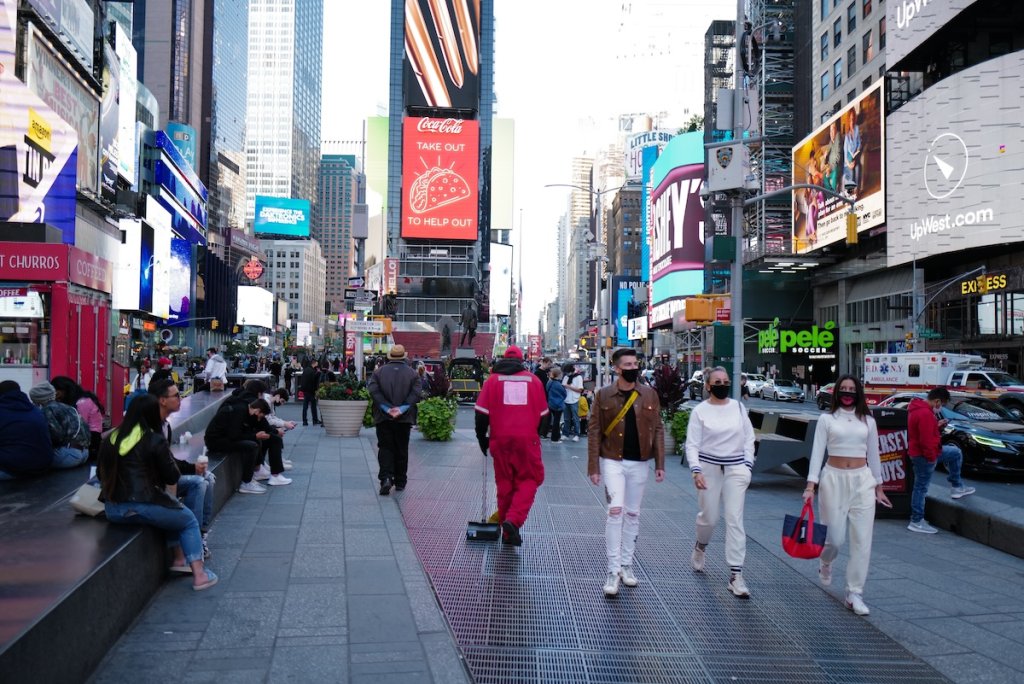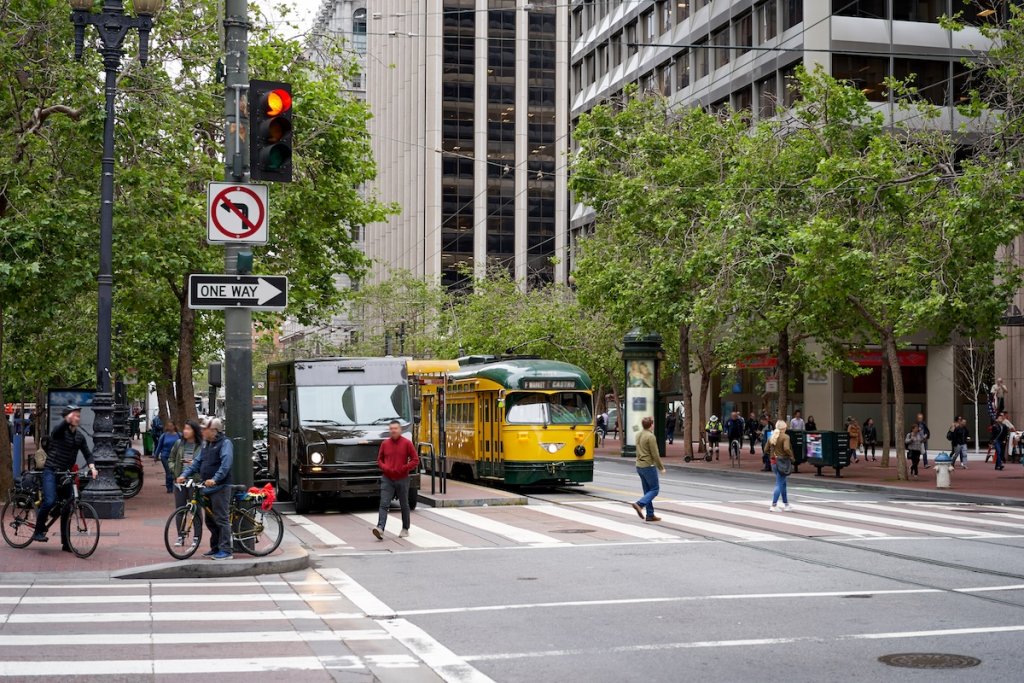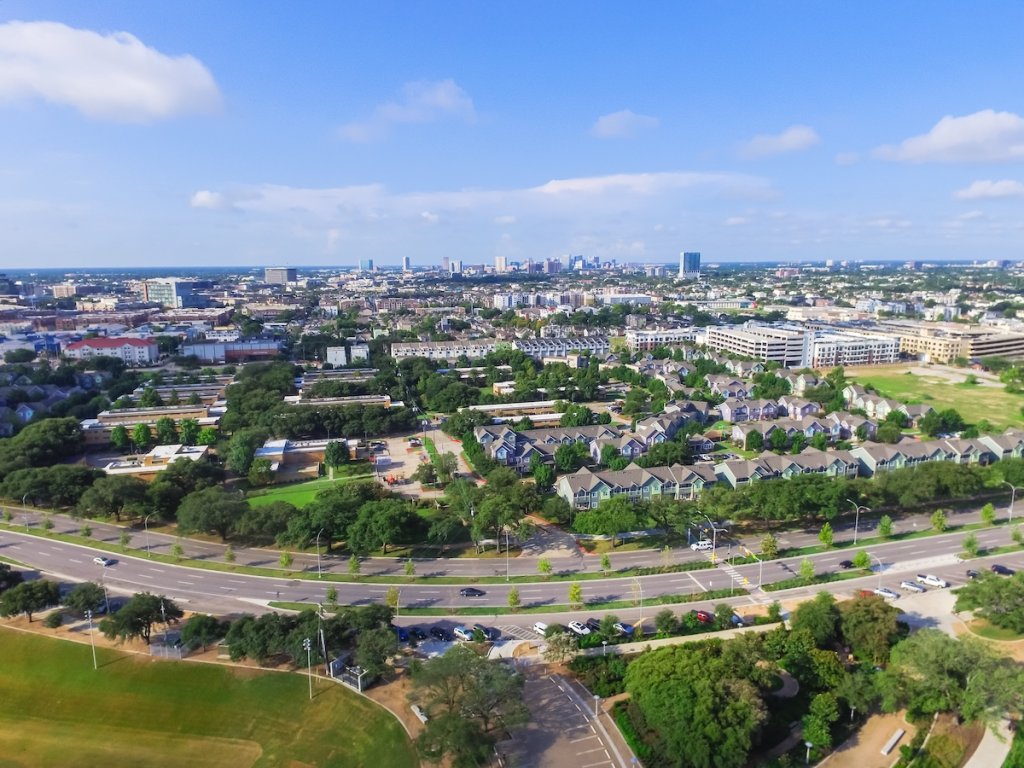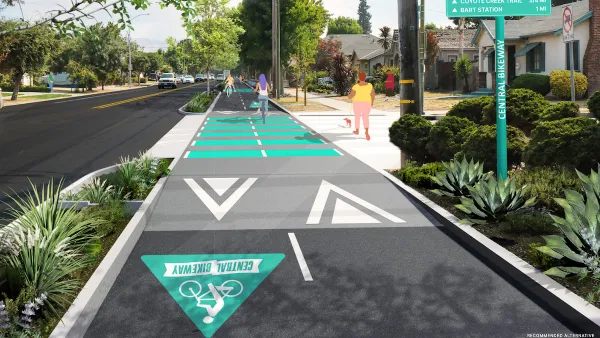Decades into his career, the walkability guru has learned a thing or two.

This summer Planetizen’s sibling, Planetizen Courses, began rolling out an epic, 7-course series on walkability, led by the one and only Jeff Speck. A condensation of his years of experience as an urban planner, Harvard lecturer, walkability advocate and new urbanist, the course is Jeff’s attempt to download everything he knows to an entire generation of planners. With Jeff hanging around Planetizen this season, we thought it was the perfect time to catch up with him and learn how decades of advocacy and design have shaped this thinking, and where the walkability movement is today.
Planetizen: What are you thinking about these days in terms of walkability? What's top of mind for you?
Jeff: Well, I want to back up and just say that it isn't often discussed why I've chosen walkability as my thing. I like to stress that I'm just someone who has, for his career, been trying to popularize and see adopted planning best practices. I came into walkability as a framework not because I'm in love with walking. But rather, it became clear to me that walkability was the best measure of successful planning and more importantly, perhaps the best way to communicate good planning.
Being more walkable is the equivalent of being more successful, more social, healthier, more economically resilient, more equitable — all the things that we understand come with getting people out of the car.
Are there planners who don't agree with your definition of success — that walkability is a measure of good planning?
I would say that there are second order impacts that concern everyone. Foremost among them, displacement. I think one thing it took many of us some time to learn as planners was that when we do our job well, we create a risk of displacement. Another, more provocative way to say that is it's often our job to gentrify.
What I mean by that is that it's our job to make places better. When you make them better, they become more valued. When they become more valued, they become more valuable, more expensive, and rents can go up and property taxes can go up. So it's very important when we work in communities to communicate this eventuality and to get the leadership to acknowledge that in many circumstances, measures need to be taken to allow the current residents to be the beneficiaries of the improvements that you're making.
And so when you ask if there's disagreement, well I think there's disagreement among more progressive planners about the risks associated with making places better. But as a designer first and foremost who wants to make lovable places, I'm never going to avoid doing that.

With that in mind, I'm curious: Is there anything that you feel you got wrong in your first book?
Big picture, I will admit to no intellectual failures. There are certainly details where we've had to self-correct. Even as recently as Walkable City Rules, which came out in 2018, for example, I was advocating for door zone bike lanes. The quiver of micromobility facilities that we were recommending included a five foot zone between the driving lanes and the flanks of parked automobiles whose doors might open, knowing full well that that was inferior. But we were also accustomed to begging for scraps and knowing what we could get away with in many cities.
Until maybe five years ago, really closer to ten years ago, we would stripe door zone bike lanes in our projects. Now we won't. So in my 10th anniversary edition of Walkable City, which tries to fix the things that I got wrong, that's one of them.
But I guess the main thing I got wrong, and that my economics mentors like Chris Limburger got wrong, was that millennials were going to move to the city nonstop in ever increasing amounts. But then the millennials had kids. And once the millennials had kids, they couldn't help but go where the best schools were. And in America you have this tremendously perverse distribution of resources such that almost any smart parent who values, above all, the well-being of their children will move to the suburbs for 10 to 15 years while their kids are old enough to benefit from a good school.
It's not like we didn't see that coming, but when the millennials started having kids, that began, even before Covid, a suburban shift that I think happened sooner than we expected.
How would you have thought about it differently, or what would you have suggested differently if you had predicted that?
I would have suggested nothing differently in the sense that there is a phase of life when that matters and most of life it doesn't. So in the 80-year lifespan of a typical American, there might be 30 years, as children and then as parents, in which it makes sense to be in the suburbs and the rest of the time, it really doesn't.
It's important to understand that all this conversation about it came up with Covid as well. This conversation about whether people prefer cities or suburbs will remain irrelevant as long as we have a great oversupply of drivable places and an undersupply of walkable places. And a real truth behind the likely success of our walkable urban centers is that there continues this tremendous mismatch between the number of people who say they want to live in a walkable place and the number of opportunities that exist to do that.

To that end, do you think that you took the extent of the affordability problems we've seen enough into account?
It wasn't so much that we got it wrong as that conditions were different. In 2010, most developers didn't want to build downtown. I should say, most developers couldn't get financing to build downtown in a typical city like Davenport, Iowa. When they wanted to put housing downtown, they had to go out of town to find financing because the typical bank or pension fund or whatever thought that downtown investment was a bad idea.
In the intervening decade, that entirely changed. It became very clear to both developers and their money that downtown was the place to be. But what was then impossible to get was the permits. So the big evolution that happened between 2010 and 2020. And of course, the movement started to grow during that decade.
Secondly, I had not read The Color of Law and didn't know the true pervasiveness of the racism in our housing system. You know, I think I thought that redlining was something the banks did. I didn't realize it was something the federal government did. I also was not fully aware of the degree to which the segregation of the American landscape was a function of top down state policies, right? I certainly also was not aware, well, I was only marginally aware of the fact that the principal way that the typical American family like mine, made it into the middle class was through the home mortgage interest deduction, and how that benefit was only available to white people.
So you have a condition, for example, in the Boston area where the typical white households had a median net worth of $247,000 in 2015. In non-immigrant black households that number was $8. And I wasn't aware of the degree that those conditions were principally the outcome of housing policy, because of the opportunity to grow wealth that was only made available to white families like mine.
So that's not to say that that leads to any changes in the recommendations towards putting more affordable housing everywhere, that appear in a walkable city. But being charitable towards myself, I'd like to think that the black hole in my knowledge was something that was shared by much of the profession, and is now being corrected.
With that in mind, how has your approach changed with the equity movements of the past half decade?
Well, in Walkable City, I have three principle motivations for making places more walkable: wealth, health, and the environment. The first three chapters of those three arguments.
In Walkable City Rules, I added sociability and equity because it became clear if you study both, you know who benefits from a more walkable environment the most, who takes transit the most, and who dies in car crashes the most by a long shot. Then anything you do to make a place more walkable is disproportionately helping those who have less.
So first of all, it simply changed my motivations and my arguments. Secondly, it made me all the more determined to add large quantities of attainable housing in walkable neighborhoods. And I think one thing that initially was missing from the housing crisis responses was not acknowledging that a house isn't really affordable if it requires every member of it to own a car. Now Massachusetts, California and elsewhere, actually tie up zoning to transit access, which is really important.

On that note, because you brought it up: I heard a rumor that you define yourself as a zoning abolitionist.
I am a zoning abolitionist.
What do you mean by that?
I have read Arbitrary Lines by Nolan Gray and it basically communicates a few really important facts. The first is that there's nothing useful that zoning does that can't be done well using other non-zoning instruments. And, in fact, was done well using other instruments prior to the advent of zoning.
Such as?
Such as separating noxious uses from each other — that was already happening and being done effectively. There were other laws, and cities were designating zones for different things. It just wasn't zoning. And it was mostly neighbors influencing neighbors — people dealing with each other. And now and then requiring, you know, civic intervention.
Secondly, I already knew this from The Color of Law, but I learned how zoning was in fact created with the clear intent and often stated intent of perpetuating now illegal race-based segregation. And when that wasn't the case, it was still created principally to increase the value of properties held by the folks who advocated for the zoning. So it's kind of funny that people complain that zoning has caused a housing shortage when zoning was created to cause a housing shortage. It was created to create scarcity, to increase the value of already held property.
Third, and this is a sentence from the book that I wrote down, it's clear that for communities that wish to provide more affordability and more integration and more opportunity for those who have less, the principal impediment to that happening now is zoning. So that's really important.
He tells the story of Houston which is by no means a success story, but it is a very affordable place. The way that Houston has avoided ever having zoning is that they allow homeowners associations to self elect to have lot size minimums and other standards that have the same impact as zoning. But because they happen neighborhood by neighborhood, they've avoided pressures to do it citywide.
And so while yes, there are certain neighborhoods in Houston that are quite exclusive and wish to remain that way because they each handle their own zoning independently, the city as a whole doesn't need to be zoned, so it's kind of like a pressure valve.

And does Houston have the outcomes we want?
Absolutely not. And that's my critique of the book. But even if you take driving into account it's a much more affordable place to live.
The principal reason why I'm comfortable saying I'm a zoning abolitionist is because I do believe that in the absence of zoning, the ills that zoning helps to protect us from can absolutely be avoided. And that zoning has been and will continue to be the principal impediment to economic and racial integration, as well as to housing production.
So I want to imagine the zoning-free utopia that you're painting. What are the tools that are in place?
Neighborhood plans, block networks and form-based code. So, when we do a new urban plan, we might have areas where buildings are bigger chunks, smaller chunks. Bigger lots, larger lots, taller, shorter, more urban, more rural. But we never talk about what goes in them.
You don't think there's anywhere that, say, housing shouldn't go?
I mean, obviously housing shouldn't go next to highways where so many poor people live currently because the air is so bad. It shouldn't go in polluting industrial areas, most of which we've exported south of the border. But, any area which doesn't present environmental dangers and that has access to transportation is where housing should go. And the density of the housing should coordinate with the availability, frequency and access of that transportation.
The number one rule of planning is to bring high density housing and jobs to transit corridors. And the number two rule is to bring transit corridors to high density housing and jobs. If we can do that then we're not sprawling.
Moving into the current moment, what do you think Trump's cuts mean for walkable cities?
They definitely have a big impact. It's clear that the cuts to specific programs like Safe Streets for All will have a big impact on the safety and walkability of those places where they were being applied.
I would say that most of the work that my firms have been involved in over the years has not received any of that funding. Most of the work that I've done has been locally funded or at most state funded. I can't point to a project that I've designed that has been funded with federal dollars. I'm not saying that to distinguish my projects in any way, but only to say that I believe the vast majority of pro-walkability improvements happening in cities are not federally funded.
So that gives me hope that we won't necessarily see a dramatic downturn in the number of projects of this type. However, a lot of really good and really important projects have been funded through federal grants. And so there's no doubt that it's going to hurt.

Is there anything that you think planners should be thinking about in this moment in terms of protecting their work around walkability?
It's clear that protecting the single family home is a Trump talking point. And that supporting higher densities is a progressive talking point. That's very different from walkability, which seems to be something everyone wants.
You know, there's a joke that everything Democrats do, Republicans do with engines: cross-country skiing versus snowmobiling or canoeing versus motor boating. And it's to a certain degree walking and biking versus driving. But most of my work has been in red cities and red states because folks in Oklahoma City want to be economically successful. And they understand that walkability is one key factor to attracting people to your downtown.
So while I'm never one to bite my tongue politically, I would say that there's no need to make it a partisan issue. We're working in Wichita. We're working in Louisville. And we don't see that interest in thriving downtowns being a partisan interest.

Planetizen Federal Action Tracker
A weekly monitor of how Trump’s orders and actions are impacting planners and planning in America.

Silicon Valley ‘Bike Superhighway’ Awarded $14M State Grant
A Caltrans grant brings the 10-mile Central Bikeway project connecting Santa Clara and East San Jose closer to fruition.

Amtrak Cutting Jobs, Funding to High-Speed Rail
The agency plans to cut 10 percent of its workforce and has confirmed it will not fund new high-speed rail projects.

Oregon Approves Ambitious Framework for ’Microgrids’
Local energy “islands” within the larger power system ensure key facilities can remain online during emergencies and power outages.

A Historic Investment in LA County’s Parks and Open Spaces
Los Angeles County has launched its largest-ever competitive grant program, investing $58 million to expand park access, enhance climate resilience, and support community-driven projects in the areas that need them most.

San Diego Wins $14M for Affordable Housing
The funding comes via the state’s Regional Early Action Planning program and will help create close to 1,000 new housing units.
Urban Design for Planners 1: Software Tools
This six-course series explores essential urban design concepts using open source software and equips planners with the tools they need to participate fully in the urban design process.
Planning for Universal Design
Learn the tools for implementing Universal Design in planning regulations.
Caltrans
City of Fort Worth
New Jersey Institute of Technology
Mpact (founded as Rail~Volution)
City of Camden Redevelopment Agency
City of Portland
City of Laramie






























